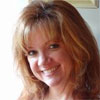Dyslexia and Library Service

With 20 in every 100 people having some form of dyslexia libraries need to address how to best serve this patron group.
Unfortunately, many dyslexics feel the library has nothing for them. When the printed word has not been your friend entering the temple of the written word can seem more like the Temple of Doom. “I don’t like feeling stupid,” one young man told me. “Why would I go to a place where I’m surrounded by more failure?” Fortunately, the library can be the place where the written word is not the enemy but a friend.
To decide how to offer appropriate patron service librarians must understand dyslexia.
Dyslexia is a specific learning disability that is neurological in origin. It is characterized by difficulties with accurate and/or fluent word recognition and by poor spelling and decoding abilities. These difficulties typically result from a deficit in the phonological component of language that is often unexpected in relation to other cognitive abilities and the provision of effective classroom instruction. Secondary consequences may include problems in reading comprehension and reduced reading experience that can impede growth of vocabulary and background knowledge.
(This Definition is used by the National Institute of Child Health and Human Development. For more information about dyslexia visit BellaOnline.com’s Reading topic.)
All librarians should have knowledge of reading problems and the materials available. High-interest/low vocabulary books should be available for all patrons without condescending reminders of reading problems. Reading level stickers should not placed on the outside of books. A struggling 15 year old should feel comfortable checking out a high/low book without embarrassment. Reading level stickers on the outside of books violate patron privacy. Series such as Michael Dahl’s Library of Doom offer darker story lines with minimal words, but not babyish, with graphics that match the plots. No middle schooler would be embarrassed to be seen reading one of these terrifying tales.
Change the title of your picture-book area if necessary. Don’t call them “Easy-to-Read” books. Most picture books have third to seventh grade reading levels, higher than many adult books. The themes and humor of many books are not easily understood by young children. Change the name of this area to the “Everybody Book” section. By marketing these books specifically for adults you make these book more appealing to tweens and teens.
Audio books are a must. One patron shared with his librarian that the downloadable books from Overdrive's Digital Bookmobile "changed his life." The world of books finally opened up for him.
Gather the required reading lists from teachers and ensure that you have the audio book versions of these titles. (This is also helpful for ESL readers.) For younger readers create kits with books and CDs or books and cassettes. Audio book kits enable parents (who may have dyslexia themselves) and children to enjoy stories together. Audio book companies offer books with different reading speeds. If possible offer more than one audio version of a title. Just as you should have large print and regular print texts, you should have audio books with different narration speeds.
In addition to trade books, many textbooks are available in audio format. The library is the perfect location to house these audio textbooks. If your school is adopting a new textbook series negotiate to have the audio textbooks included.
You Should Also Read:
Bibliographies
Cool Reads For Tough Guys
Juvenile Books Adults Will Enjoy

Related Articles
Editor's Picks Articles
Top Ten Articles
Previous Features
Site Map
Content copyright © 2023 by Paula Laurita. All rights reserved.
This content was written by Paula Laurita. If you wish to use this content in any manner, you need written permission. Contact Christine Sharbrough for details.



